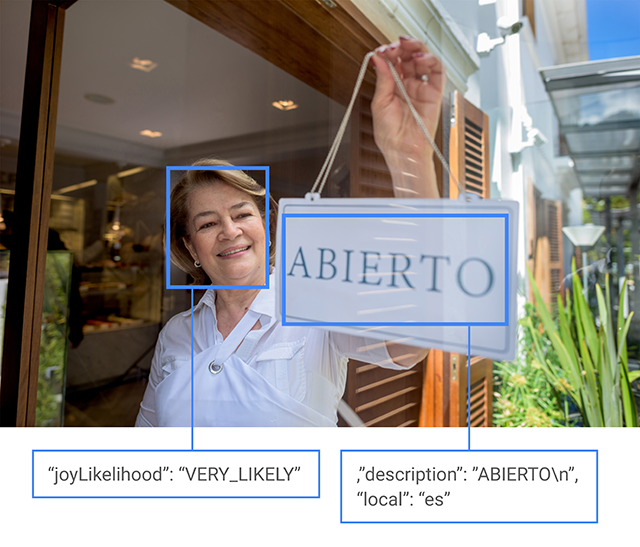February 20, 2016 weblog
Google Cloud Vision API beta release is announced

Google has machine learning technologies and this week took one more step to make sure the world knows about them and to make the work of developers that much more satisfying.
Google Cloud Vision API has entered Beta, and it is open now for all to try. "During the beta timeframe, each user will have a quota of 20 million images/month." Google issued the announcement on the Google Cloud Platform site.
They said they were announcing "the beta release of Google Cloud Vision API. Now anyone can submit their images to the Cloud Vision API to understand the contents of those images—from detecting everyday objects (for example, 'sports car,' 'sushi,' or 'eagle') to reading text within the image or identifying product logos." On the Sample Applications page, Google said, "This is a Beta release of Google Cloud Vision. This API is not covered by any SLA or deprecation policy and may be subject to backward-incompatible changes. This feature is not intended for real time usage in critical applications."
That would not dampen the enthusiasm over the decision from Google to apply the machine learning concept to images. Cloud Vision will deliver image analytics capabilities as APIs. Using it, application developers can build applications which can see and understand the content within the images.
It was built on computer vision models; the service enables customers to detect entities within an image from objects to faces and product logos.
Developers can also use it for robots, giving them the ability to recognize image content. Take a Raspberry Pi robot —-it can detect faces in the image.
SiliconANGLE's Mike Wheatley, senior staff writer, commented that "show it a picture of a banana and the bot will call it what it is. Alternatively, you could tell your robot to single out the smiling faces from those that are frowning, and it'll give you the answer faster than you can click your fingers."
Cloud Vision API can analyze in images emotional attributes of people, such as joy, sorrow and anger
Cloud Vision APIs can do a number of other tasks which include inappropriate content detection. Powered by Google SafeSearch, Cloud Vision API moderates content from crowdsourced images by detecting different types of inappropriate content.
Logo detection is also possible, where one can detect popular product logos within an image.
Text extraction is a feature where Optical Character Recognition (OCR) enables you to detect text within images, along with automatic language identification across a set of languages.
Some feedback from companies which have already explored this:
PhotoFy, a photo editing and branding app, moderates over 150,000 photos a day created by a wide audience. Before the Cloud Vision API was available, CTO Chris Keenan said protecting branded photos from abuse was almost impossible. PhotoFy in using the Cloud Vision API can flag potentially violent and adult content on photos, in line with their abuse policies.
"We have drones that take thousands of photos per flight. We find that Google Cloud Vision API is the best way to turn those huge number of photos, automatically produced, into meaningful insight," said Tomoaki Kobayakawa, general manager, Aerosense.
What this all means in the bigger picture of Google's ambitions was spelled out in SiliconANGLE. Wheatley saw this as "the latest in a flurry of AI-related announcements from Silicon Valley giants, as Google goes head to head with companies like Microsoft and IBM in a race to dominate this emerging niche."
Google, he said, was prioritizing its machine learning efforts at a time when the AI sector seems to be "red hot at the moment, and just about every major tech company is trying to carve out a niche for itself. Google faces stiff competition from the likes of IBM and Microsoft in the race to create the best machine learning tools."
As for pricing, the Thursday announcement said, "We're also announcing pricing for Cloud Vision API and added additional capabilities to identify the dominant color of an image. For example, you can now apply Label Detection on an image for as little as $2 per 1,000 images or Optical Character Recognition (OCR) for $0.60 for 1,000 images." Pricing is effective starting March 1.
© 2016 Tech Xplore





















